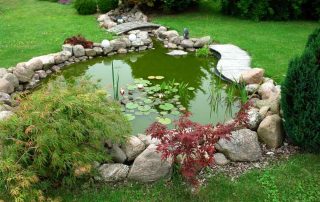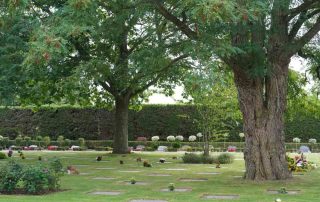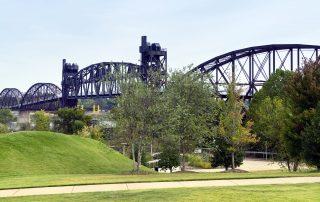The Ultimate Guide to Commercial Landscaping for Cemeteries
Pugh's Earthworks Cemeteries are sacred spaces where families come to remember and honor their loved ones. As such, the landscape must reflect the respect and tranquility these spaces deserve. Commercial Landscaping for Cemeteries is an art and science that combines aesthetics, functionality, and maintenance to create serene environments. In this guide, Pugh's Earthworks will explore best practices for cemetery lawn care, weed control, pest management, hardscapes, and more to help cemetery managers, groundskeepers, and funeral directors maintain these hallowed grounds. Understanding the Importance of Cemetery Landscaping Cemetery landscaping is not just about keeping the grass trimmed and the flowers blooming. It is about creating a peaceful, welcoming environment for visitors. Well-maintained landscapes can provide comfort and solace, making the experience of visiting a cemetery more meaningful and less distressing. Benefits of Professional Cemetery Landscaping Enhanced Aesthetics: A beautifully landscaped cemetery reflects care and respect, providing a serene place for reflection. Improved Safety: Regular maintenance ensures pathways and common areas are safe for visitors, reducing trip hazards and other risks. Increased Property Value: Well-maintained grounds can boost the overall value of the cemetery property. Environmental Benefits: Thoughtful landscaping can support local biodiversity and manage water runoff effectively. Pugh's Earthworks Key Elements of Cemetery Landscaping Cemetery Lawn Care A lush, green lawn is the foundation of any cemetery landscape. Proper cemetery lawn care involves regular mowing, watering, fertilization, and aeration to keep the grass healthy and vibrant. Best Practices for Cemetery Lawn Care Mowing: Maintain a consistent mowing schedule, keeping the grass at an optimal height of 2.5 to 3 inches. Watering: Water deeply but infrequently to encourage deep root growth. Early morning watering is ideal to reduce evaporation. Fertilization: Use slow-release fertilizers to provide consistent nutrients throughout the growing season. Aeration: Aerate the soil annually to improve air, water, and nutrient penetration. Cemetery Weed Control Weeds can quickly overrun a cemetery, detracting from its beauty and competing with desirable plants for nutrients and water. Effective cemetery weed control involves both preventive measures and active treatments. Tips for Effective Cemetery Weed Control Mulching: Apply mulch around trees, shrubs, and flower beds to suppress weed growth and retain soil moisture. Herbicides: Use pre-emergent herbicides to prevent weed seeds from germinating and post-emergent herbicides to tackle existing weeds. Manual Weeding: Regularly inspect and manually remove weeds before they can spread. Proper Plant Selection: Choose ground covers and plants that outcompete weeds. Cemetery Pest Control Pests can damage lawns, plants, and structures, making effective cemetery pest control essential. Integrated Pest Management (IPM) combines cultural, mechanical, biological, and chemical methods to manage pests sustainably. IPM Strategies for Cemetery Pest Control Monitoring: Regularly inspect the grounds for signs of pests and identify problem areas. Cultural Controls: Maintain healthy plants through proper care to reduce their susceptibility to pests. Mechanical Controls: Use traps, barriers, and other physical methods to manage pests. Biological Controls: Introduce natural predators or beneficial insects to control pest populations. Chemical Controls: Use pesticides as a last resort, selecting targeted products and applying them responsibly. [...]










